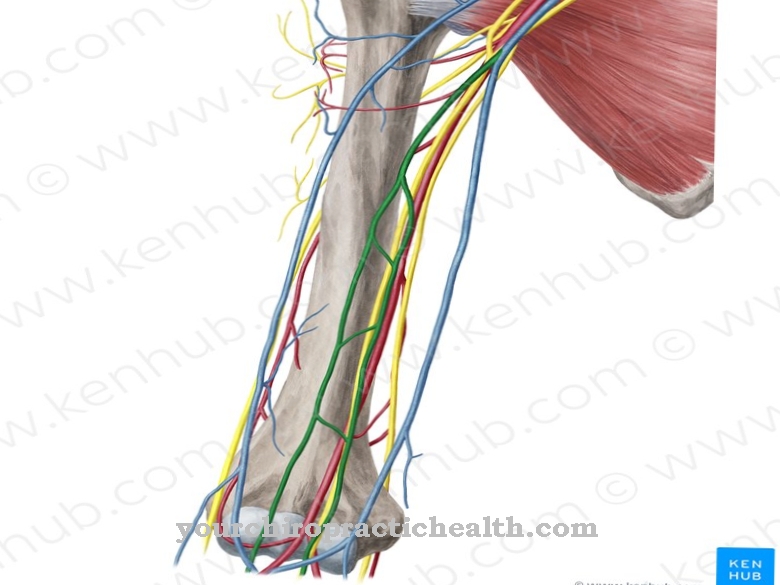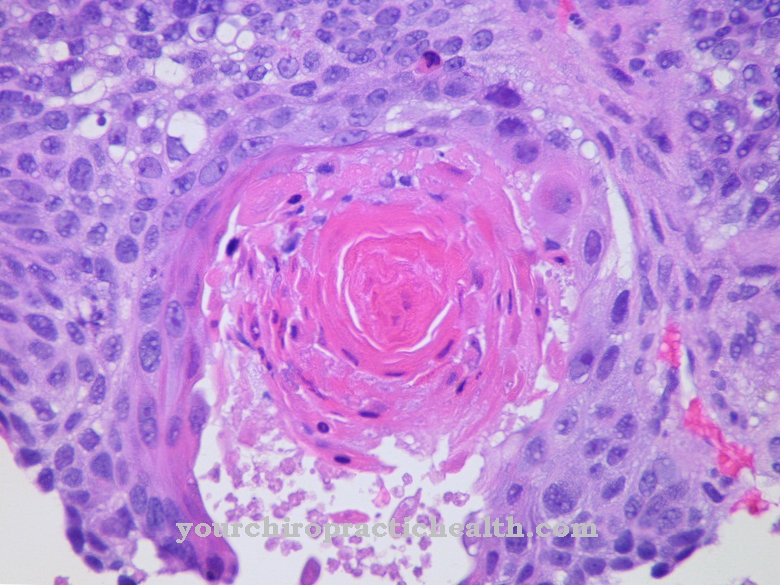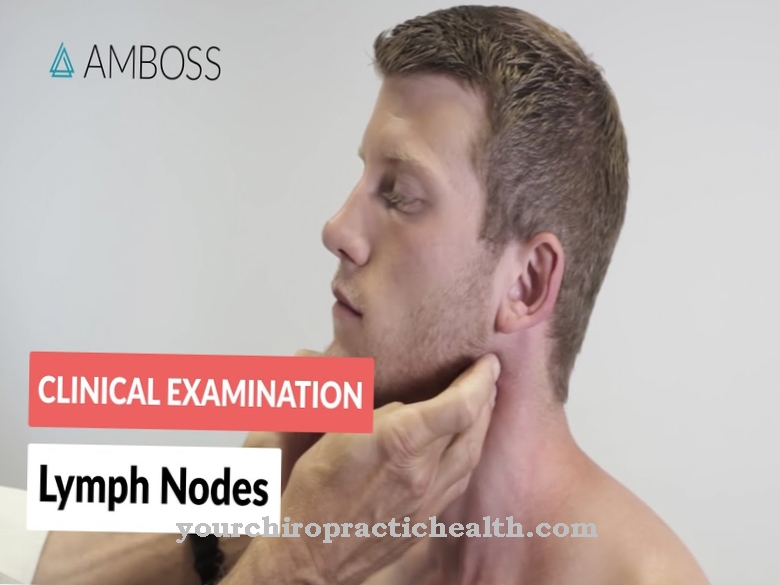He's more of a quiet representative of his class: The Elbow Compared to other joints in the human body, it rarely causes problems and usually does its job well into old age. Nevertheless, there are diseases of the elbow joint in all age groups, from toddlers to tennis players to senile osteoarthritis, which can be easily understood using the anatomy of this joint.
What is the elbow?
The Elbow joint is a rather complicated joint made up of three partial joints, each of which articulates with one another.
Three long bones are involved in the structure of the joint: the upper arm bone (humerus), the ulna that gives it its name, and the radius (radius).
The joint between the upper arm and ulna is purely a hinge joint, only in combination with the other two partial joints does a wheel movement arise, i.e. the rotation of the forearm against the upper arm.
Anatomy & structure
The anatomy is on Elbow joint quite palpable due to the thin soft tissue covering. At the end of the head of the humerus, both sides of the humerus, to which the muscles of the forearm are attached, feel.
Between these knots there is a joint roller that communicates with the wide socket of the ulna - this is where the hinge movement between the upper and lower arm takes place. The elbow itself (olecranon) is felt on the back of the joint and is known to everyone as the "musician's bones": The fact that this causes such pain when bumped is due to the superficial course of the ulnar nerve, a nerve that is completely unprotected here by a bone groove runs.
If you hold the forearm so that the palm is facing upwards, the two forearm bones ulna and radius lie parallel to each other: the ulna forms the larger articular surface with the upper arm, the radius is placed on the side with the so-called radius head, which is rounded in shape and with articulated with the upper end of the ulna as well as with the humerus head.
All three partial joints are surrounded by a common joint capsule. The ligamentous apparatus is quite simple: there are lateral ligaments inside and out, and a ring ligament loops from the neck of the ulna once around the radial head back to the neck of the ulna so that the radial head can turn around in it.
Blood vessels and most of the nerves run along the flexor side of the elbow joint, protected by structures like the biceps tendon. This is also a more popular place for doctors and less popular with patients for taking blood from the subcutaneous veins, which are clearly visible here.
Function & tasks

The Elbow joint is therefore kept in shape by the closely coordinated bone structures and a relatively simple ligamentous apparatus and allows various possibilities of movement:
The joint between the upper arm and ulna is purely a hinge joint and only allows flexion (until the soft tissue is braked) and extension (until the tip of the elbow hits the humerus at the back). The joint between ulna and radius, guided by the ring ligament, allows a wheel movement, which is medically called supination (outward rotation of the forearm) or pronation (inward rotation of the forearm).
The joint between the humerus and the radius only follows the two directions of movement of the other joints and allows the combination of both.
Illnesses & ailments
Even in toddler age there is a typical injury in the Elbow joint, which always gives parents a real scare, but luckily it is basically harmless and easy to fix: the nanny dislocation.
In the case of a child, the radius head still slides relatively freely in the ring band and can also be pulled out of it. Typical accident: an adult leads the child by the hand, the child falls, the adult tries to prevent the fall by quickly pulling up the child's hand. If the radial head is dislocated from the ring ligament in this way, it no longer slides back by itself, the child can hardly move the elbow, the screaming is great.
An experienced doctor can, however, repair the damage with a targeted twist under tension, after all nothing is broken. Later on, the tennis elbow in particular causes problems. It is an overload and inflammation of the tendons in the attachment area of the outer humerus. This is where the muscles of the back of the forearm, especially the extensor muscles of the back of the hand, advertise. It is therefore primarily a backhand overload in tennis. The counterpart on the inner humerus is the golfer's elbow.
If the elbow is injured, the olecranon, i.e. the back of the ulna, is particularly affected. Due to the muscle tension that prevails here, immobilization in a cast is usually not enough; these fractures often have to be operated on.
You can find your medication here
➔ Medicines for joint pain













.jpg)

.jpg)
.jpg)











.jpg)